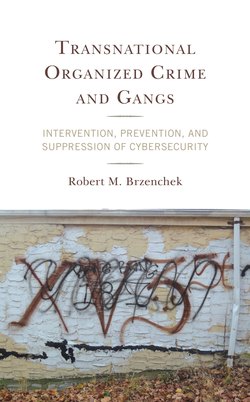Читать книгу Transnational Organized Crime and Gangs - Robert M. Brzenchek - Страница 5
На сайте Литреса книга снята с продажи.
Introduction
ОглавлениеThis book will provide several first-person examples of the mind-set and mentality present in today’s transnational organized crime groups, combined with a holistic approach toward prevention and intervention in the cybersecurity space. Credence will be given to the role and importance of the gang members’ spirituality and family connections, whether these are supportive of the gang culture or attempt to set an anti-gang environment. This will be augmented by examples of how the increasing threats are coming from transnational organized crime groups (e.g., Russian mafia, Chinese Triads, MS-13, and cartels). These influential organizations have tremendous power and money, which means they have the ability to pay hackers to defeat cybersecurity measures. The dangers posed by organized crime groups are nothing new. For decades, these groups have launched sophisticated attacks against individuals as well as major corporations. Billions of dollars have been stolen every year, and large, continuous hacks of our highly sensitive computer systems continue to take place. What is new is the acknowledgment that cybersecurity should be a high priority for every individual, company, and government entity. While the Department of Homeland Security’s involvement in cybersecurity is a step in the right direction, more measures need to be put in place that facilitate collaboration across industries and government entities. For example, to measure the nation’s cybersecurity efforts, there needs to be a diverse membership comprised of federal and state regulators with responsibility for oversight of publicly/privately owned facilities, privately owned and operated suppliers, crisis-level and regional management authorities, and other parties. The membership should be familiar with the International Standards Groups (ISO) standards, and in every case, they should be experienced with implementation and auditing organizations and facilities that have chosen to adopt voluntary, standards-based management systems. This membership should have interests conforming to the voluntary frameworks exemplified in the Plan-Do-Check-Act models common to quality, environmental, health, safety, and security standards of the ISO.
